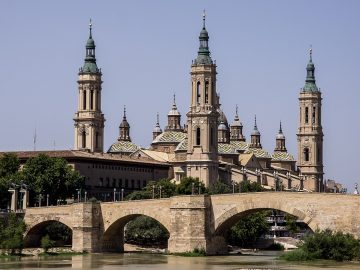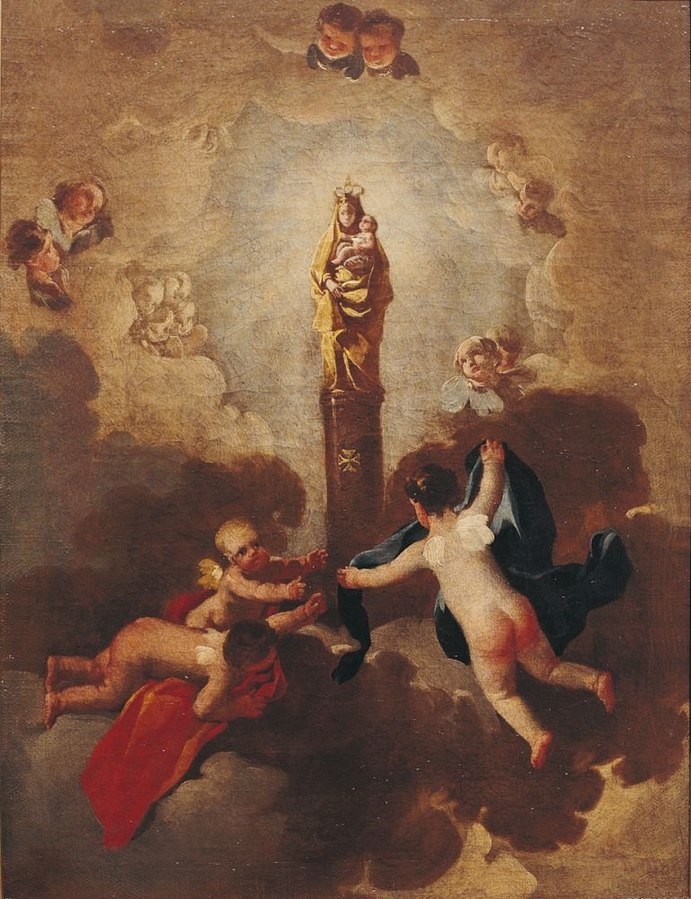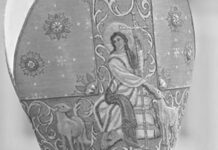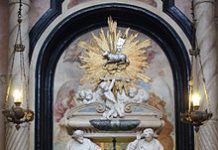This Marian commemoration dates back to very early in the Church’s history. In fact, it is the first ‘vision’ of Our Lady. As the story has been handed down, Mary appeared to Saint James the Apostle (the ‘Greater’) in the year 40 or so, as he was discouraged in his evangelizing efforts in Hispania (Spain). It seems even Apostles had their down days, and aren’t always successful, at least in earthly terms. She consoled him, and encouraged his return to Jerusalem, which he did, where he was martyred by beheading.
Two things make this vision unique: First, Our Lady appeared standing on a pillar, perhaps evoking the ‘stylite’ hermits – the most famous being Saint Simon – who spent their lives so perched. Second, and more to the point, the Virgin Mother was still alive at the time, making this her one and only bilocation, at least that we know of.
This got me thinking about other miraculous events in Our Lady’s life, and how much of a thaumaturge she might have been during her earthly sojourn. I suppose in light of her hiddenness – amare nesciri, love to be unknown and all that – she was not reserving the main bulk of her intercession until heaven, like the future Saint Therese, only far more powerful than even the Little Flower.
Miracles have certainly abounded through Our Lady of the Pillar through the centuries, and devotion was and still is widespread, especially in Spain, where an impressive basilica was dedicated in her honour in 1711.

Date 11 August 2015, 12:41:42
Source P8115832.jpg
Author FRANCIS RAHER
wikipedia.org
Her feast was made canonical by the Sacred Congregation of Rites in 1723, to be celebrated on October 12th, which also happens to be the day Christopher Columbus discovered the ‘new world’, which he thought was China, or perhaps Japan, having no notion yet of what we now know as America, nor the vast expanse of the Pacific Ocean. Hence, Our Lady of the Pillar is also the patroness of the ‘Hispanic world’.
May she intercede for us all, and grant peace, especially at this time in the Middle East, and good will amongst men. +












